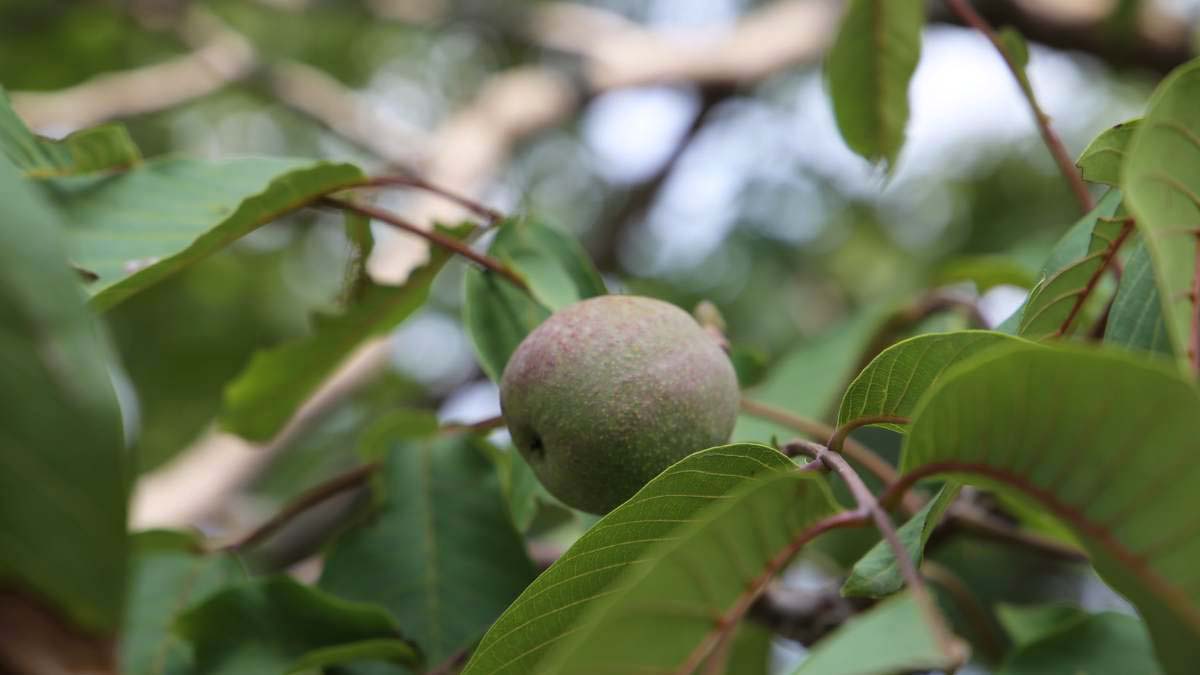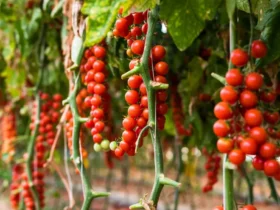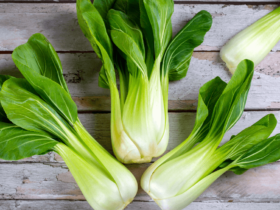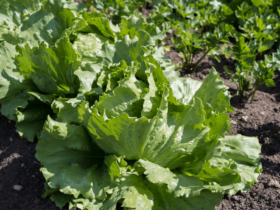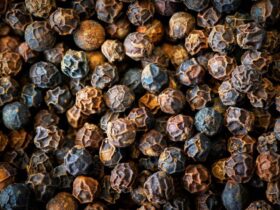Passion fruit goes through five growing stages: seed germination, seedling emergence, vine development, flowering, and fruiting. Passion fruit growing stages include seed germination, seedling emergence, vine development, flowering, and fruiting.
Passion fruit (Passiflora edulis) is a tropical plant known for its delicious and aromatic fruit. To successfully grow passion fruit, it’s essential to understand its growing stages. These stages are crucial for proper cultivation and ensuring a bountiful harvest. Each stage has its unique characteristics and requirements, allowing the plant to progress from a tiny seed into a vibrant vine adorned with beautiful blossoms and, eventually, delectable fruits.
From the initial seed germination to the final fruition, the journey of passion fruit growth is truly remarkable. We will explore the different stages in detail, providing you with a comprehensive guide on passion fruit cultivation. So, let’s delve into the world of passion fruit growth and discover the secrets behind its stages of development.
Choosing The Right Variety
Choosing the right variety is crucial for successful passion fruit growing. Each stage requires careful consideration to ensure optimal growth and fruit production.
When it comes to growing passion fruit, choosing the right variety is crucial. Different varieties have different growth habits, flavors, and resistance to pests and diseases. By selecting the appropriate variety for your specific growing conditions, you can maximize your yield and ensure a successful harvest. Here are some essential considerations when choosing the right variety for your passion fruit cultivation:
Soil And Climate Requirements
One of the key factors to consider when selecting a passion fruit variety is the soil and climate requirements. Passion fruit plants thrive in well-drained soils with a pH range of 6.0 to 7.5. They prefer sandy loam soils, but can also adapt to clay soils with good drainage. It is essential to avoid waterlogged soil as it can lead to root rot.
In terms of climate, passion fruit plants are typically subtropical to tropical plants. They thrive in areas with temperatures between 68°F and 86°F (20°C to 30°C). If you live in a region with cold winters, you can still grow passion fruit by selecting cold-hardy varieties that can withstand lower temperatures.

Consideration Of Local Conditions – Passion Fruit Growing Stages
When choosing the right passion fruit variety, it is important to consider the local conditions of your area. Factors such as altitude, rainfall patterns, and wind exposure can influence the growth and productivity of passion fruit plants.
Altitude plays a role in temperature variation, with higher altitudes experiencing cooler temperatures. If you live in a mountainous region, selecting a variety that is tolerant of lower temperatures will ensure successful cultivation. On the other hand, if you reside in a coastal area prone to strong winds, choosing a variety with wind-tolerant traits will help protect the delicate vines.
| Variety | Growth Habit | Flavor | Pest and Disease Resistance |
| Passiflora edulis | Vining | Tangy and Sweet | Resistant to Fusarium wilt and nematodes |
| Passiflora ligularis | Shrub-like | Tropical and Perfumed | Resistant to Whiteflies and Aphids |
| Passiflora incarnata | Climbing | Slightly Sour and Floral | Resistant to Root-knot nematodes |
| Passiflora quadrangularis | Vining | Sweet and Aromatic | Resistant to Fusarium wilt and leaf spot disease |
By carefully considering your local conditions and requirements, you can choose a passion fruit variety that thrives in your specific environment. This will enable you to enjoy a bountiful harvest of delicious Passion Fruit Growing Stagesfrom your garden or farm.
Preparing The Soil – Passion Fruit Growing Stages
Before planting passion fruit, it is crucial to prepare the soil properly. This step involves removing weeds, loosening the earth, and enriching it with organic matter to create a fertile environment for healthy growth.
When it comes to growing passion fruit, preparing the soil is crucial for ensuring healthy plant growth and productive fruiting. Proper soil preparation sets the foundation for a successful passion fruit garden. Here are some essential steps to follow when preparing the soil.
Testing Soil Ph
Testing the soil’s pH is the first step in preparing the soil for passion fruit cultivation. Passion fruit plants thrive in slightly acidic to neutral soil with a pH range of 6.0 to 7.5. A pH outside this range can impede nutrient absorption and affect plant health. To test the soil pH, you can use a soil testing kit available at garden centers or send a sample to a laboratory for a more detailed analysis. Once you determine the pH level, you can make the necessary adjustments to optimize the soil’s acidity or alkalinity.
Adding Organic Matter
The next step in preparing the soil for passion fruit cultivation is adding organic matter. Organic matter improves soil structure, enhances drainage, and provides essential nutrients for plant growth. It also helps retain moisture and promotes beneficial microbial activity in the soil. You can add organic matter in the form of compost, well-rotted manure, or leaf mold. Spread a layer of organic matter on the soil surface, about 3-4 inches thick, and incorporate it into the top 6-8 inches of soil using a garden fork or tiller. This ensures that the organic matter is evenly distributed and mixed with the existing soil.
Soil Preparation Summary
Preparing the soil for passion fruit growing involves testing the soil pH to ensure it falls within the suitable range of 6.0 to 7.5. If necessary, adjustments can be made to optimize the soil’s acidity or alkalinity. Additionally, adding organic matter improves soil structure, enhances drainage, and provides essential nutrients for healthy plant growth. By following these steps, you can create an ideal growing environment for your passion fruit plants.

Planting Passion Fruit
Planting Passion Fruit Growing Stages: Passion fruit is a tropical fruit known for its tantalizing flavor and vibrant colors. If you’re a gardening enthusiast or simply love the idea of cultivating your own delicious produce, then planting passion fruit should definitely be on your to-do list. Successful passion fruit cultivation starts with proper spacing and digging the planting hole.
Start of Proper Spacing section with H3 heading
Proper Spacing
When it comes to planting passion fruit, proper spacing plays a crucial role in ensuring healthy growth and optimal fruit production. Each passion fruit vine requires ample room to spread its roots and vines, typically around 10 to 15 feet apart. This distance allows the vines to thrive without overcrowding, ensuring each plant receives sufficient nutrients and sunlight for robust growth and abundant fruiting.
Start of Digging the Planting Hole section with H3 heading
Digging The Planting Hole
Properly preparing the planting hole is essential for giving your passion fruit plant a strong foundation to grow. To start, dig a hole that is twice as wide and deep as the root ball of the vine. This spacious hole ensures that the roots have sufficient space to spread out and take hold in the surrounding soil, encouraging healthy growth. Additionally, the depth of the hole allows for good drainage, preventing waterlogging and root rot.
End of HTML response
Support And Training Methods – Passion Fruit Growing Stages
Growing passion fruit successfully requires proper support and training methods to ensure healthy plant growth and maximum fruit production. In this section, we will explore two essential techniques: building trellises and pruning and tying.
Building Trellises
Trellises are a vital component for supporting passion fruit plants, enabling them to grow in an organized and structured manner. Building a trellis involves constructing a framework that allows the vines to climb and spread effectively.
When building a trellis, consider the following:
- Material: Choose a sturdy material such as treated wood or metal that can withstand the weight of the passion fruit vines.
- Height: Ensure the trellis is tall enough to accommodate the vigorous growth of passion fruit vines.
- Spacing: Set the trellis posts at appropriate intervals to provide sufficient support and prevent overcrowding.
A well-built trellis offers stability, promotes proper airflow, and facilitates sunlight penetration, all of which contribute to healthy passion fruit growth and abundant fruiting.

Pruning And Tying
Pruning and tying are essential techniques for maintaining the growth and shape of passion fruit plants. Pruning involves selectively removing unwanted branches and shoots to enhance airflow, reduce disease incidence, and encourage fruit development. Tying, on the other hand, involves securing the passion fruit vines onto the trellis to provide support and prevent damage.
When pruning and tying passion fruit plants, keep the following considerations in mind:
- Pruning:
- Regularly prune dead or diseased branches to maintain plant health.
- Remove excessive shoots to prevent overcrowding and allow optimal sun exposure.
- Trim lateral branches to promote vertical growth and better fruit production.
- Tying:
- Gently tie the growing vines to the trellis using soft twine or plant ties, ensuring not to constrict growth.
- Regularly check the ties and adjust as necessary to accommodate the plant’s growth.
By incorporating these support and training methods, you can optimize the growth and productivity of your passion fruit plants. Remember to check and tend to your trellises regularly to ensure the plants receive proper support and guidance throughout their growth stages.
Watering And Fertilizing – Passion Fruit Growing Stages
Watering and fertilizing are vital aspects of passion fruit growing. Proper watering ensures that the plants receive adequate moisture while fertilizing provides the necessary nutrients for their growth and productivity. In this section, we will discuss the watering frequency and how to apply fertilizer to optimize passion fruit growth.
Watering Frequency
Passion fruit plants require regular and consistent watering to thrive. It is crucial to maintain the ideal soil moisture level to support their root development and overall health.
When it comes to watering passion fruit plants, it is essential to consider the weather conditions and the stage of growth. During the early growth stages, such as planting and establishment, the plants require frequent watering to promote root growth. Ensure that the soil remains evenly moist but not waterlogged.
| Watering Stage | Frequency |
| Planting and Establishment | Every 2-3 days |
| Fruit Development | Once a week |
| Maturity | Every 10-14 days |
In general, passion fruit plants benefit from deep watering rather than shallow sprays. This encourages healthier root growth, as the water reaches deeper levels of the soil where the roots can absorb it effectively. It is also important to water the plants in the morning or late afternoon to prevent excessive evaporation and reduce the risk of diseases caused by moisture build-up.
Applying Fertilizer – Passion Fruit Growing Stages
Fertilizing passion fruit plants helps provide them with the essential nutrients they need for vigorous growth and abundant fruit production. Choosing the right fertilizer and applying it at the correct time and rate is crucial for optimal results.
It is recommended to apply a complete balanced fertilizer, such as a 10-10-10 or 15-15-15 blend, during the early stages of growth. This ensures that the plants receive a good supply of nitrogen, phosphorus, and potassium, the primary macronutrients required for healthy growth. Apply the fertilizer around the base of the plants, taking care not to over-apply, as excessive fertilization can lead to nutrient imbalances and potential damage to the plants.
Once the plants start fruiting, a higher potassium fertilizer, such as a 0-0-50 blend, can be applied to promote flower and fruit development. Apply the potassium-rich fertilizer alongside regular watering to ensure proper nutrient uptake.
Remember to follow the recommendations and instructions provided by the fertilizer manufacturer to achieve optimal results and avoid any potential harm to the plants. Regular monitoring of the plant’s response to the fertilizer application will also help determine the need for any adjustments or additional feeding.

Pest And Disease Management – Passion Fruit Growing Stages
Passion Fruit Growing Stages requires careful attention to pest and disease management. By identifying common pests and implementing effective treatment methods, you can protect your passion fruit plants and ensure a healthy and bountiful harvest.
Identifying Common Pests
When it comes to passion fruit plants, several pests can cause damage and hinder growth. It is crucial to recognize these common pests early on to take prompt action and prevent further infestation.
| Pest | Identification |
| Aphids | Aphids are small, soft-bodied insects that feed on the sap of passion fruit plants. They can be identified by their green, yellow, or black color and clusters around new growth. |
| Spider Mites | Spider mites are tiny pests that infest the undersides of leaves. They are usually red or brown and cause stippling or yellowing of the foliage. |
| Mealybugs | Mealybugs are small, white insects that infest the stems and leaves of passion fruit plants. They leave a sticky residue and cause stunted growth and leaf deformation. |
| Fruit Flies | Fruit flies are small, flying insects that lay eggs on ripe passion fruit. The hatched larvae feed on the fruit pulp, causing it to rot. |
Being able to identify these common pests will help you take the necessary measures to eradicate them efficiently and protect your passion fruit plants.
Effective Treatment Methods
Once you have identified the pests infesting your passion fruit plants, it is essential to implement effective treatment methods to control and eliminate them. Here are some proven techniques:
- Biological Control: Introduce beneficial insects, such as ladybugs, lacewings, or predatory mites, to feed on the pests. This acts as a natural predator-prey relationship, helping to control the infestation.
- Neem Oil Spray: Dilute neem oil with water and spray it on the affected areas. Neem oil acts as a natural pesticide, suffocating and repelling common pests.
- Insecticidal Soap: Apply insecticidal soap to the infested plants. The soap coats the pests’ exoskeleton, causing dehydration and eventually killing them.
- Fruit Traps: Set up fruit traps containing a sugary solution to attract and capture fruit flies. This reduces their population and prevents further damage to the passion fruit.
Implementing these treatment methods at the first sign of pest infestation will help keep your passion fruit plants healthy and thriving. Remember to monitor your plants regularly and take necessary actions promptly to protect them from these common pests.

Harvesting And Ripening – Passion Fruit Growing Stages
Passion Fruit Growing Stages goes through various stages of growth, including harvesting and ripening. Understanding these stages is essential for successful fruit cultivation and maintaining optimal flavor and quality.
One of the most exciting moments for any passion fruit grower is witnessing the fruit reaching the perfect stage for harvesting and ripening. Determining the fruit’s maturity is crucial to ensure that it is picked at the right time. Proper harvesting techniques play a vital role in preserving the quality and flavors of the passion fruit. Let’s dive deeper into each of these aspects to guide you through the rewarding process of harvesting and ripening passion fruit.
Determining Fruit Maturity
Determining the maturity of passion fruit is essential to ensure optimal taste and texture. Here are a few indicators that can help you determine if your passion fruit is ready for harvest: 1. Color: Passion fruit changes color as it matures. Typically, the fruit will transform from green to shades of purple, yellow, or deep orange, depending on the variety. Keep an eye on the color change as it indicates the fruit’s ripening stage.
2. Texture: Gently squeeze a passion fruit to assess its firmness. A mature fruit should have some give without being overly soft or too firm. Practice makes perfect, and with time, you’ll develop a knack for determining the ideal texture. 3. Weight: Mature passion fruit tends to feel heavier in hand. Compare the weight of the fruit to others on the vine. If it feels heavier, it might be a sign that it’s reached its peak ripeness. 4. Wrinkles: As passion fruit ripens, it develops characteristic wrinkle lines on its outer skin. These wrinkles are a reliable indication that the fruit is ready for harvest. Be sure to examine the skin closely to spot these distinctive marks.
Proper Harvesting Techniques
Harvesting passion fruit requires a delicate touch and attention to detail to ensure the best quality fruit for consumption. Follow these proper harvesting techniques to optimize your passion fruit harvest:
1. Timing: Harvesting passion fruit at the right time is crucial. Allow the fruit to fully ripen on the vine to maximize its flavors. Be patient and resist the temptation to pick the fruit prematurely.
2. Tools: Use sharp pruning shears or scissors to carefully cut the fruit from the vine. Avoid pulling or twisting the fruit, as this can damage the plant and affect the future harvest.
3. Cutting Technique: With sterilized tools, cut the stem approximately half an inch above the fruit. Taking care not to damage the fruit’s skin will minimize the risk of fungal or bacterial infections.
4. Collection: Collect the harvested fruit in a clean container, avoiding any contact with the ground. This ensures cleanliness and prevents potential contamination.
Passion Fruit Growing Stages to ripen after harvesting. If the fruit is not fully ripe when picked, leave it at room temperature until it reaches the desired stage of ripeness. Refrigeration can slow down the ripening process, while exposure to ethylene-producing fruits, such as apples or bananas, can help hasten it. Harvesting passion fruit is a labor of love that brings joy to any gardener. By understanding the fruit’s maturity indicators and following proper harvesting techniques, you can savor the delicious rewards of your labor. Happy harvesting!
Troubleshooting Tips – Passion Fruit Growing Stages
Passion fruit plants can sometimes encounter problems during their growth stages. In this section, we will discuss some common issues that may arise and provide tips to troubleshoot and overcome these challenges. By being proactive and addressing these problems early on, you can ensure the healthy development of your passion fruit plant.
Dealing With Yellowing Leaves
If you notice that the leaves of your passion fruit plant are turning yellow, it could be a sign of nutrient deficiency or improper watering. Here’s what you can do:
- Check the soil moisture regularly. Passion fruit plants prefer well-draining soil, so ensure that the soil is not waterlogged or too dry.
- Inspect the roots for any potential issues like root rot or damage. If you find any problems, consider repotting the plant in fresh, well-draining soil.
- Provide proper nutrition by applying a balanced fertilizer high in nitrogen. This encourages healthy leaf growth and prevents yellowing.
- Avoid excessive use of chemical pesticides, as they can harm the plant’s foliage. Instead, choose organic pest control methods to protect your passion fruit plant.
Addressing Growth Issues
If your passion fruit plant seems to be experiencing stunted growth or lack of vigor, here are some steps you can take to address these issues:
- Ensure that the plant is receiving adequate sunlight. Passion fruit plants require at least six hours of direct sunlight daily.
- Check the soil pH levels as passion fruit plants thrive best in slightly acidic soil with a pH range of 6.0 to 6.5. Adjust the pH if necessary using organic amendments.
- Investigate for any pest infestations, such as aphids or mealybugs, which can hinder the proper growth of the plant. Remove the pests manually or use insecticidal soap.
- Prune away any dead or diseased branches to promote healthier growth and improve airflow around the plant.
- Consider providing some support, like trellises or stakes, if your passion fruit plant is struggling to climb and establish properly.
Frequently Asked Questions On Passion Fruit Growing Stages
How Long Does It Take For Passion Fruit To Grow?
Passion fruit typically takes about 5-7 months to completely grow and ripen.
What Are The Different Passion Fruit Growing Stages?
Passion fruit goes through three main stages: flowering, fruiting, and ripening, each essential for a successful harvest.
How Often Should Passion Fruit Plants Be Watered?
Water passion fruit plants once or twice a week, ensuring the soil is moist but not waterlogged. Adjust based on weather conditions.
Conclusion
Understanding the various Passion Fruit Growing Stages is essential for successfully cultivating this exotic fruit. From germination to fruiting, each phase requires specific care and attention. By providing adequate sunlight, water, and nutrient-rich soil, you can nurture passion fruit plants to their fullest potential.
Regular pruning and protecting against pests and diseases are also crucial for maintaining healthy growth. With patience and dedication, you can enjoy the delightful harvest of your passion fruit plants for years to come.
